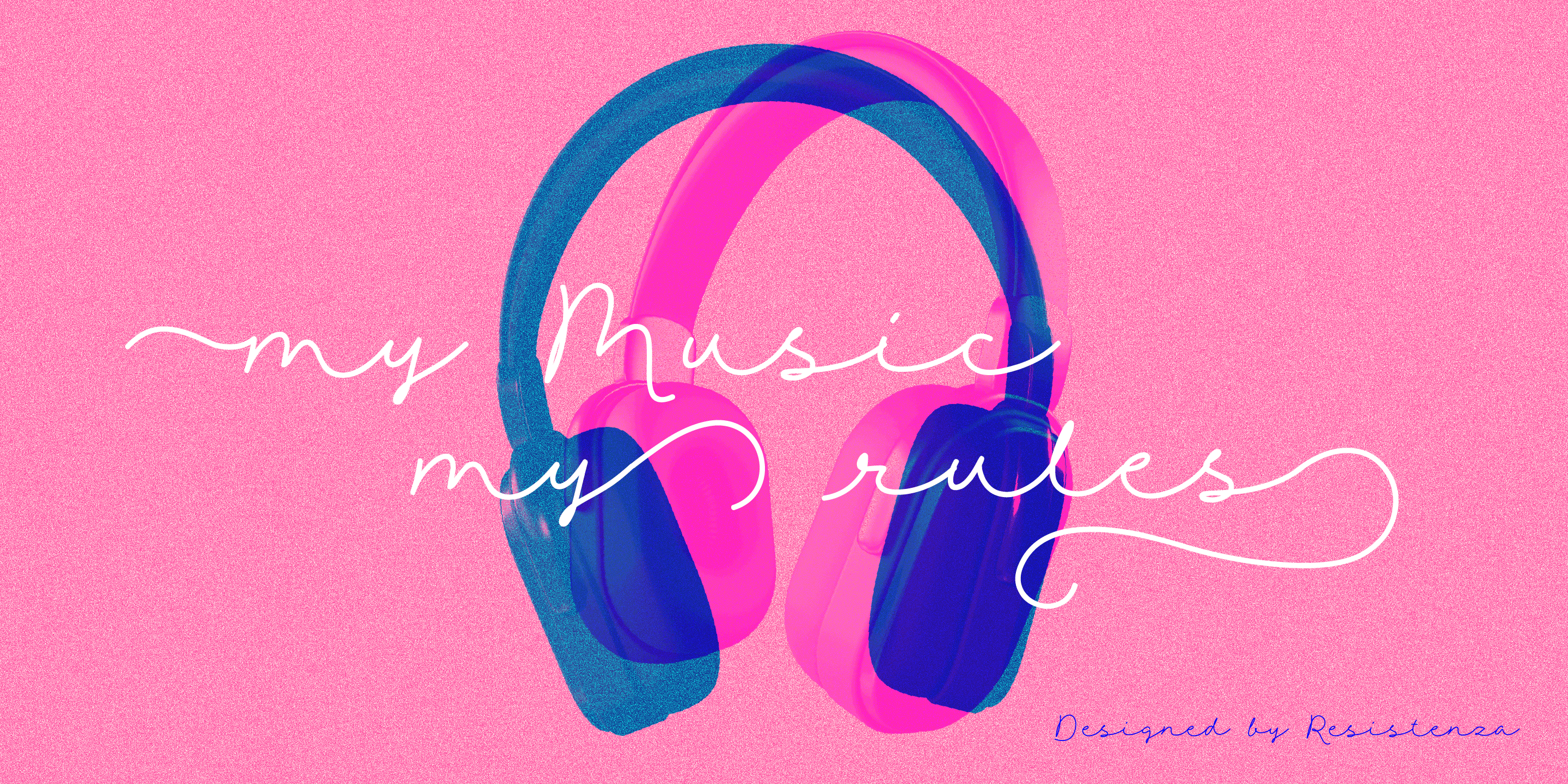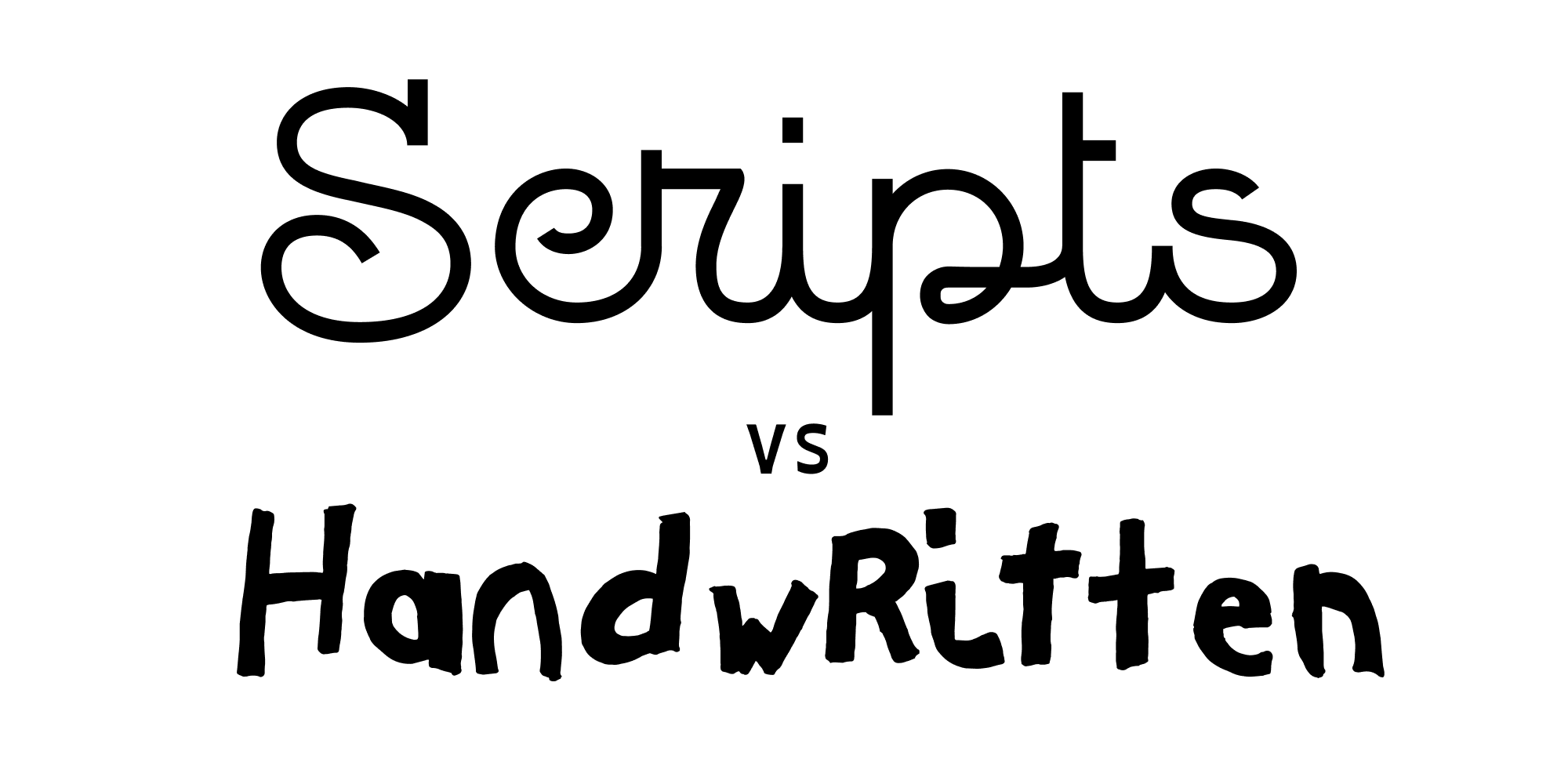Understanding the Differences
Script and handwritten fonts are an excellent way to add personality, warmth, and a human touch to your design projects. In this post, we’ll explore the key differences between script and handwritten fonts, and when you should choose each one to elevate your layouts.

What is a Script Font?
A script font is a character set designed to mimic the flow and beauty of handwritten text. Unlike traditional typefaces, script fonts are drawn by hand to replicate the organic strokes of real human writing. Script fonts can take various forms, from playful and casual to formal and ornate, allowing designers to choose a style that suits their project's mood and tone.
Script fonts aim to capture the smooth, continuous flow from letter to letter. Key characteristics include natural imperfections such as variations in stroke weight, bouncing baselines, and ink or brush textures. These imperfections give the font its personality and organic feel. Depending on the style, script fonts can be connected, semi-connected, or unconnected, offering versatility in design.
What is a Handwritten Font?
Handwritten fonts are based on actual hand lettering, created with pens, brushes, or other writing tools. Unlike script fonts, which are designed to look like handwriting, handwritten fonts aim to capture the uniqueness of individual human handwriting styles. They can feature irregularities that give the text a more authentic, personal touch, making them ideal for projects that seek to evoke a sense of intimacy and craftsmanship.
Script vs. Handwritten Fonts: Key Differences
While both script and handwritten fonts mimic the appearance of handwriting, they have distinct qualities:
- Script Fonts: Designed to replicate the smooth flow of traditional handwriting with connected or semi-connected letters. They tend to have more polished, uniform shapes.
- Handwritten Fonts: Based on real hand-drawn lettering, capturing the imperfections and uniqueness of human writing, often resulting in more varied shapes and irregularities.
The Appeal of Script and Handwritten Fonts
Both script and handwritten fonts can add a personal, crafted feel to your design. These fonts capture the imperfections of human handwriting, making them perfect for projects where you want to create a connection with your audience. Whether used in branding, invitations, or product packaging, script and handwritten fonts evoke a sense of warmth and authenticity.
Cursive Fonts: A Special Category
Cursive fonts are a specific style of handwritten fonts that became popular in the 16th century. Cursive fonts feature characters that are joined in a flowing manner to allow for faster and more fluid writing. Like script fonts, cursive fonts can be either connected or semi-connected, and they can be used to create a flowing, elegant feel in your designs.
Why Use Handwritten and Script Fonts?
Handwritten and script fonts are incredibly versatile and can be used in a variety of design contexts. They bring a close, personal touch to any project, whether it's a logo, packaging, invitation, or website design. These fonts can evoke emotions and provide a sense of authenticity, making them ideal for brands or projects that want to appear more human and approachable.
Explore Our Handwritten Fonts Collection
At Resistenza Type, we offer a wide range of handwritten fonts, including our popular Dream Away script font. With its unique texture and six weights, Dream Away is perfect for any project that needs a handwritten, personal touch. Explore our full collection to find the ideal font for your next design.
To help inspire your next project, we've gathered a selection of examples showcasing our handwritten fonts in use. Check them out for creative inspiration and ideas!
